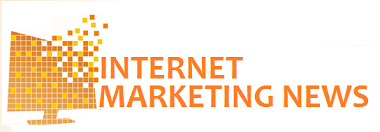The Internet of Things (IoT) has revolutionized how we interact with technology. As more devices connect to the internet, the impact of IoT on web development has become increasingly significant. In this blog post, we’ll explore how the IoT has changed web development and what website owners and website design services need to know to keep up with the latest trends.
What is the IoT?
The Internet of Things refers to the interconnected network devices, vehicles, home appliances, and other items embedded with electronics, software, sensors, and network connectivity that enable these objects to collect and exchange data.
The impact of IoT on web development has been significant, as it has increased device connectivity, data collection, personalization, responsive design, user experience (UX), security, analytics, artificial intelligence (AI), and blockchain technology.
Increased Device Connectivity
One of the primary impacts of IoT on web development in Columbus is the increase in device connectivity. IoT has enabled everyday devices to connect to the internet, creating a network of interconnected devices.
Examples of devices now connected to the internet include smart home devices like Amazon Echo and Google Home, wearable fitness trackers like Fitbit and Apple Watch, and even cars with built-in connectivity.
This increased device connectivity can help a Columbus web design company create applications and services interacting with these devices.
Increased Data Collection
IoT has also led to an increase in data collection. As more devices connect to the internet, they can collect and transmit data about their users.
This data collection is essential to web design Columbus Ohio, as it enables website owners and developers to understand their users better. By collecting data on user behavior, preferences, and interactions, a website design company can create more personalized and engaging experiences. The impact of IoT on web development is the ease with which personalization can be achieved. By collecting data on user behavior and preferences, web developers can create highly personalized user experiences.
Examples of how personalization has been implemented in web development include personalized recommendations on e-commerce websites, personalized news feeds on social media platforms, and personalized content on websites like Netflix and Amazon.
Responsive Design
IoT has also led to an increased emphasis on responsive design. With so many devices now connected to the internet, websites must be designed to be responsive to different screen sizes and device types.
Responsive design ensures that websites look and function correctly on all devices, improving the user experience and ensuring website owners don’t miss out on potential customers accessing their site on a mobile device.
You can also hire an expert to help you create a responsive website by searching online for “web design services near me.”
User Experience (UX)
IoT has also had a significant impact on user experience design. With so many devices now connected to the internet, web developers must consider how their websites will look and function on various devices.
Examples of IoT devices that have changed the user experience include smart speakers that allow users to control their home appliances with voice commands and smartwatches that allow users to receive notifications and control their phones from their wrists.
Security
IoT has created challenges for website security. With so many devices now connected to the internet, there are more opportunities for hackers to exploit vulnerabilities in these devices.
Examples of security risks associated with IoT devices include hackers gaining access to smart home devices and using them to launch DDoS attacks on websites or accessing personal data stored on wearable devices.
So, hiring a professional to help you with your site’s security is paramount. You can find such a professional by searching for “website design services near me.”
Analytics
IoT has also had a significant impact on web analytics. With so much data being generated by connected devices, web developers need to analyze this data to gain insights into user behavior and preferences.
Examples of how analytics have been implemented in IoT devices include fitness trackers that collect data on user activity and sleep patterns and smart home devices that collect data on energy usage.
Artificial Intelligence (AI)
IoT and AI are becoming increasingly intertwined. AI-powered IoT devices can collect and analyze data in real time, enabling them to make decisions and take actions without human intervention.
Examples of AI-powered IoT devices include self-driving cars and smart home devices that can learn from user behavior and adjust their settings accordingly.
Blockchain
Blockchain technology is being integrated with IoT to improve security and privacy. IoT devices can securely share data using blockchain technology without needing a trusted intermediary.
The benefits of blockchain for IoT security and privacy include increased transparency, immutability, and decentralization.
Conclusion:
The combination of IoT and web development has the potential to revolutionize the world, but many challenges stand in the way. These challenges can be overcome with a focus on security and privacy, allowing developers to create fascinating new technologies.

